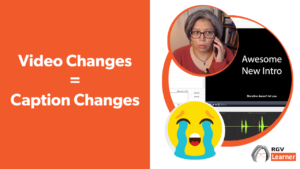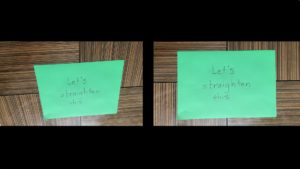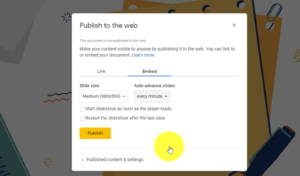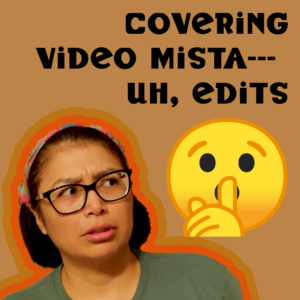
I See It Now
Hey, That’s a Learning Objective It’s like the clouds parted and the light finally shined. I’m preparing for a presentation. I was writing bullet points
 As I child I thought people who like strawberries must taste something different than I do when biting it; otherwise, why would they eat it? I am (at times unintentionally hilariously) literal-minded. The realization a person can experience the same action or event as I do and interpret it in an entirely different way was mindboggling.
As I child I thought people who like strawberries must taste something different than I do when biting it; otherwise, why would they eat it? I am (at times unintentionally hilariously) literal-minded. The realization a person can experience the same action or event as I do and interpret it in an entirely different way was mindboggling.
As a learner, I saw this during a group exercise for conjugating Spanish verbs. I opened up my notebook, where I had written the conjugation verb tables. My classmate looked astonished, as if I’d unveiled a secret answer key, and asked, “Where did you get that?” I was confused and replied, “The teacher has been writing these on the board… every day.”
In web design, I saw this too. I showed a handful of people a new home page design, which included a slider at the top with three navigation dots at the bottom. I asked these very computer literate people if they knew what the dots represented. More than half didn’t know. In a meeting later that day, I asked the web developers to change the dots to numbers. One replied, “Those are pretty standard navigation elements. People know what they mean.” I said, “No. Not everyone.”
Now, in instructional design, the job is to make sure all the learners gain the intended knowledge or skills from a lesson. And, honestly, the best tool I have to make that happen is the knowledge that not everyone thinks like I do.
For a graduate school project last year, I was gathering feedback on two lessons I designed. I thought I had done so well and a reviewer for one lesson hit an obstacle on the first step.
Reviewer: Where do I get the log-in information?
Me: The first line of the instructions said it was sent to your email.
Reviewer: I don’t see it.
Me: Your work email.
Reviewer: I don’t see it.
Me: I sent it two days ago.
Reviewer: Oh.
Feedback from others is vital. It could be as simple and important as making a button bigger. Or assuming a learner knows something they don’t. If you can’t get feedback before launching a lesson, try collecting it after in a survey or some other form. Because they best way to find out what learners are thinking is simply to ask.

Hey, That’s a Learning Objective It’s like the clouds parted and the light finally shined. I’m preparing for a presentation. I was writing bullet points

Even a small change in a video that already has captions can cascade into major changes for the caption times. It can be disheartening to hear,

Fixing Video Perspective in Adobe Premiere Pro If you can add a video to a sequence in Adobe Premiere Pro, adjusting its perspective can be

In a Google Slides presentation, click on the File menu and choose Publish to the Web. On the dialog box that appears, click on the

I was reading a set of instructions, and my writing senses were tingling. The instructions started similar to, “While doing Action X, do Action Y.”

The person on camera flubbed a line. Rather than rerecord the entire shot, someone says, “We’ll fix that in editing.” And the person on camera
About RGV Learner
I’m from the RGV, which is short for Rio Grande Valley, the four counties located in the southern tip of Texas. I’m also a lifelong learner. That’s what led to the website name RGV Learner. Before working in instructional design, I worked in the communications field, including television production, website and social media management, and news. Looking to contact me? Click here.